The Omega Seamaster Diver 300M No-Date, Everything You Need To Know, And More…
Now that the cat's out the bag, here's a rundown of Omega's long-awaited No-Date version of its iconic dive watch.
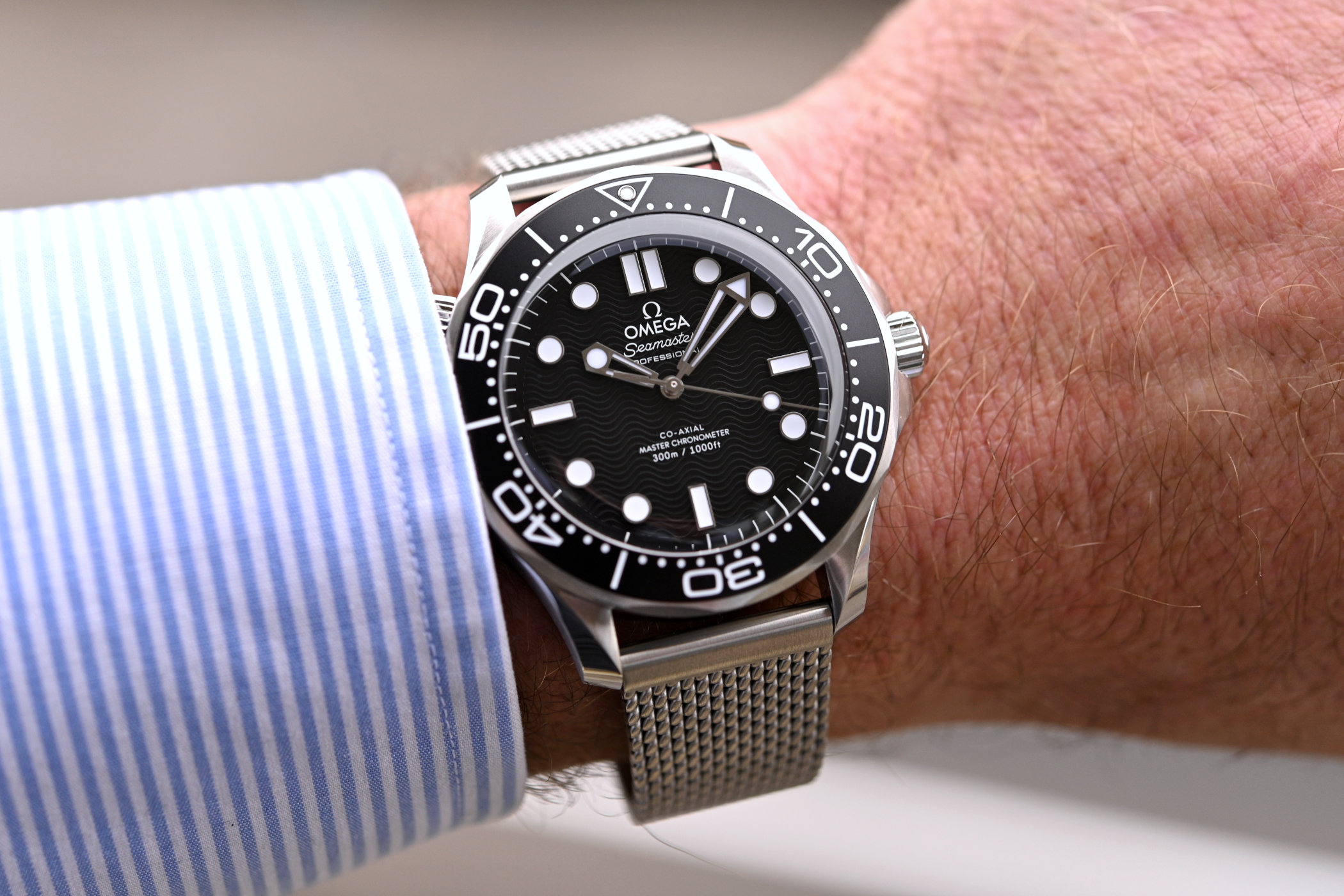
After months of speculation and anticipation, and enviously seeing Daniel Craig flaunting one, Omega has finally brought us the Seamaster Diver 300M No Date. In my initial article, I wanted to get the news out quickly, so I kept things a touch factual. Now though, after getting my hands on the two watches that are introduced, plus some time to digest everything, we’re going for a more in-depth story. Is it any good, for instance? How does it tie in with other No Date models? And most importantly perhaps, would I, or should you spend your money on it? This, and a whole lot more, is to come as I dissect the new Omega Seamaster Diver 300M No-Date collection!
While the spotlight often goes to the legendary Speedmaster, it is in fact the Seamaster collection that is the true cornerstone of the brand. It’s been around the longest, as the name first appeared in 1948 on the occasion of Omega’s then-100th anniversary. The collection has been in continuous production ever since, and formed the foundation of Omega’s professional watches, alongside the Speedmaster and Railmaster. Over time, the watch has evolved massively, not only in looks and mechanics but also in materials! It also spawned sub-collections such as the Aqua Terra, Planet Ocean and Ploprof. We’ve documented the entire history of the Seamaster collection extensively, in our three-part series called The Seamaster Chronicles (Part 1, Part 2, Part 3).
The Legacy of the Seamaster Diver 300M
Widely known as the “Bond Watch”, while in fact the titular spy wore plenty of other watches throughout all 27 movies so far, the Seamaster Diver 300M was first introduced in 1993. Back then it was called the Seamaster Professional 300M, or SMP in short. The watch made its on-screen debut on the wrist of Pierce Brosnan for the 1995 James Bond film Goldeneye, after which it got its fitting nickname. Since then, it’s also become a genuinely iconic dive watch, although it can still be considered a relatively modern one at that.
With the release of the Seamaster Professional 300M in 1993, Omega offered a choice of a quartz movement or the automatic Calibre 1109 (derived from the ETA 2892). Its design already showed the blueprint of the Seamaster Diver 300M as we know it today, with the brand’s signature lyre lugs, a guarded screw-down crown, a helium escape valve at 10′ and a 60-minute bezel with large notches for grip. The debut model featured a deep blue dial with a fine wave-like pattern, a key element for a lot of collectors and enthusiasts. What also stood out was the five-link metal bracelet with polished vertical lines contrasting against the otherwise brushed links. For a detailed rundown of the entire history of the SMP, I recommend checking out our Collector’s Corner episode on it.
The collection was updated, mostly on the mechanical part, in the late 1990s. By then, the relatively simple ETA-based automatic wouldn’t suffice anymore and thus it was replaced by the Calibre 2500, regulated by a co-axial escapement. In 2006 the SMP was overhauled, grew in size and gained applied markers and logos. Then, in 2011, Omega switched out the lacquered dial for glossy ceramic dials to match the ceramic bezel insert it already had by then. In 2018 the Seamaster Diver 300M celebrated its 25th anniversary, which marked the return of the wave pattern, albeit in a broader style.

Coming full circle, sort of, Omega now takes elements of the early Seamaster Professional 300M models and combines them with characteristics from modern-day Seamaster Diver 300Ms in the new pair of No-Dates. While these were no big surprise, given the fact Daniel Craig has been seen wearing one on numerous occasions these past months, it’s very welcoming to finally see them become a reality. The former James Bond actor sported what we now know as the all-steel Seamaster Diver 300M No-Date during the 2024 Summer Olympics, but could also be seen with what we believe is a Bronze-Gold edition with black dial and burgundy bezel during the 2024 Governors Awards ceremony. However, Omega has remained very tight-lipped about that one so far…
To Date, or Not to Date
One of the most heated debates by enthusiasts and collectors is about the date, or rather if it should or should be included on the dial. It seems that whatever a brand decides to do, there’s always a large number of people out there who simply disagree with the eventual decision. If you put a date on a dial, it’s not proportioned correctly, or even in the wrong place, not angled right or not the right colour and so on. If you leave out the date function altogether, those on the other end of the spectrum will make a statement the watch would be miles better if it would in fact have a date somewhere. It seems like there’s no end to it.
Now that Omega has launched this new Seamaster Diver 300M No-Date, that discussion will likely flair up again. It’s important to know it’s not the first time Omega has left out the date function in the Seamster Diver 300M collection. The most recent editions are the special edition for the America’s Cup, the 60 Years of James Bond and the titanium 007 Edition. Digging a little deeper, there’s also been the Black Black in 2021, the Nekton Edition, the platinum and gold James Bond edition, the 2019 ceramic and titanium Diver 300M and so on. So it’s not that this is something drastically new, it’s just something fans have been asking for, or better put, demanding from Omega! One thing that arguably can be said about each and every one of the no-date Seamaster Diver 300Ms is that they have a more balanced design compared to the date models. Then again, preferences are very personal so you might disagree with me, which is perfectly fine.
a New Chapter
The new duo No-Date models of the Seamaster Diver 300M take off in different directions. Both feature the familiar 42mm wide stainless steel case, with signature elements such as the screw-down crown, helium escape valve, and notched bezel right where you would expect them. However, the bezel differs on both, as the black dial version is machined from steel and has a black aluminium insert with a white diving scale. The alternative is a titanium bezel with an insert that’s coarsely grained and has a laser-ablated diving scale in positive relief, adding a significant touch of depth and modernity. Looking back at past models, we see the same style in the Nekton and Black Black editions of the Seamaster Diver 300M, albeit the latter one came in full ceramic instead of titanium.
Regardless, the general architecture is the same for both. The cases both top out at 13.8mm in height and are water-tight to a depth of 300 meters. The case has a domed sapphire crystal to keep the dial safe, although it would have been fitting if the crystal had been mounted flush with the bezel as it did on the original Seamaster Professional 300. Nevertheless, the box-type crystal was to be expected given the previous No-Date special editions (NTTD, 60th Anniversary). Overall they look and feel very familiar, which is reassuring with such an iconic watch. It’s not an extreme revolution of things, just a play on materials, decorations and colours.
On to the dial, which is where things get even more interesting. The all-steel No-Date has a black lacquered dial with a laser-engraved wave-like pattern. Omega goes back to early Seamaster models with this one, as it features finer waves instead of the broad waves of the ceramic dials we know from recent years. This new dial is also matte in finish, sucking in the light a lot more.
The result is a lot less sparkle, making for a more subdued, purposeful look and feel. Its monochromatic brother, however, has a vertically brushed steel PVD-coated dial. This gives it a far more contemporary appeal, making for an almost ghostly-grey diver. Pretty cool! Out of the two, I would say this is the more original design, although the black one is closer to the original style of the Seamaster Professional 300.
In terms of legibility, the black one wins as well but not by much. Both rely on the tried-and-tested set of skeleton hands with Super-LumiNova inserts for the hours and minutes, a lollipop central seconds hand with a luminous dot, and a mix of rectangular and circular markers. The marker at noon is doubled, and everything is filled with Super-LumiNova. The hands and markers emit a blue hue, apart from the green glow of the minute hands, which makes it easier to check the time in the dark. On the outer perimeter, there’s a printed minute track in white or black, depending on the dial colour. The same goes for the brand’s name and logo and the rest of the markings. I for one am glad that Omega has not departed too much from the blueprint of the Seamaster Diver 300M!
Master chronometer mechanics
The Calibre 8806 that drives these two new No-Date Seamasters is a familiar one too. It was used for the latest America’s Cup edition, for instance, as well as the No Time To Die, the 60 Years of James Bond, the Black Black and so on. It’s also the one found in the criminally overlooked Railmaster, the third iconic name in Omega’s Professional series of watches that include the Seamaster and Speedmaster.
This automatic movement runs at a rate of 25,200vph and is regulated by the brand’s co-axial escapement with a free-sprung Silicon balance. The rhodium-plated central rotor features the hallmark red lacquered engravings and Geneva stripes in Arabesque, and it drives kinetic energy to the single barrel for a power reserve of up to 55 hours. It’s a METAS-certified Master Chronometer, which means it can withstand magnetic fields of up to 15,000 Gauss without the need for a soft-iron inner case.
To differentiate from the date models of the Seamaster Diver 300M, Omega puts the new No-Date versions on a stainless steel mesh bracelet. The design is known from the No Time To Die watch, and the 60 Years of James Bond editions, and this time around are closed by a folding clasp as well. This clasp is a bit thick underneath the wrist and doesn’t close as tight as the same clasp does on rubber or leather straps. The alternative is to purchase it on the black or grey rubber straps, also fitted with this folding clasp. Prices for the Omega Seamaster Diver 300M No-Date are EUR 6,600 for the ones on a rubber strap, and EUR 7,200 if you want the mesh bracelet instead.
Are we satisfied?
Well, in short; yes! It looks amazing and is once again built to Omega’s familiar over-engineering standards. But if I were to compare it to that other famously long-running dive watch, the Rolex Submariner, do I think it still holds up? The classic black dial Submariner is available with or without a date in exactly the same configuration. The Omega, on the other hand, forces you to change colour and dial finishing, which broadens your options but also poses a challenge. What if you want the big-wave pattern in green, but without a date? That’s not possible. What if you want the miniature-wave pattern in black with a date? Again, it’s a no.
One thing to note is that this Seamaster Diver 300M No-Date is here to stay, as it’s added to the permanent collection. Most likely, it will fly out of the boutiques as it’s an excellent interpretation of what was already a very good watch to begin with. Now that the No-Date is finally a reality, it’s interesting to muse about what direction Omega will take it in. Will they expand the No-Date concept to other sub-segments of the range, or will they just play around with case materials and colours at first? Who knows, time will tell. All I know is that it might be the very first Seamaster Diver 300M that has made it to my ‘most-wanted’ list, so with that said, yes, I am quite satisfied!
My only gripe? It’s a touch expensive… It costs more than the comparable date versions with, in general, more expensive ceramic dials and bezel inserts. For the sake of argument, a Seamaster Diver 300M with a ceramic dial and bezel insert and with a date function currently retails for EUR 6,200 on rubber or EUR 6,600 on the five-link steel bracelet. And this No-Date, with fewer functions and parts, and less costly materials, starts above that! Then again, the full titanium No Time To Die edition had a sticker price of EUR 8,100 on a NATO-like strap and EUR 9,100 on a titanium mesh bracelet. So in reality, we shouldn’t complain too much, right? We should be happy this is now part of the collection!
For more information, please visit OmegaWatches.com.

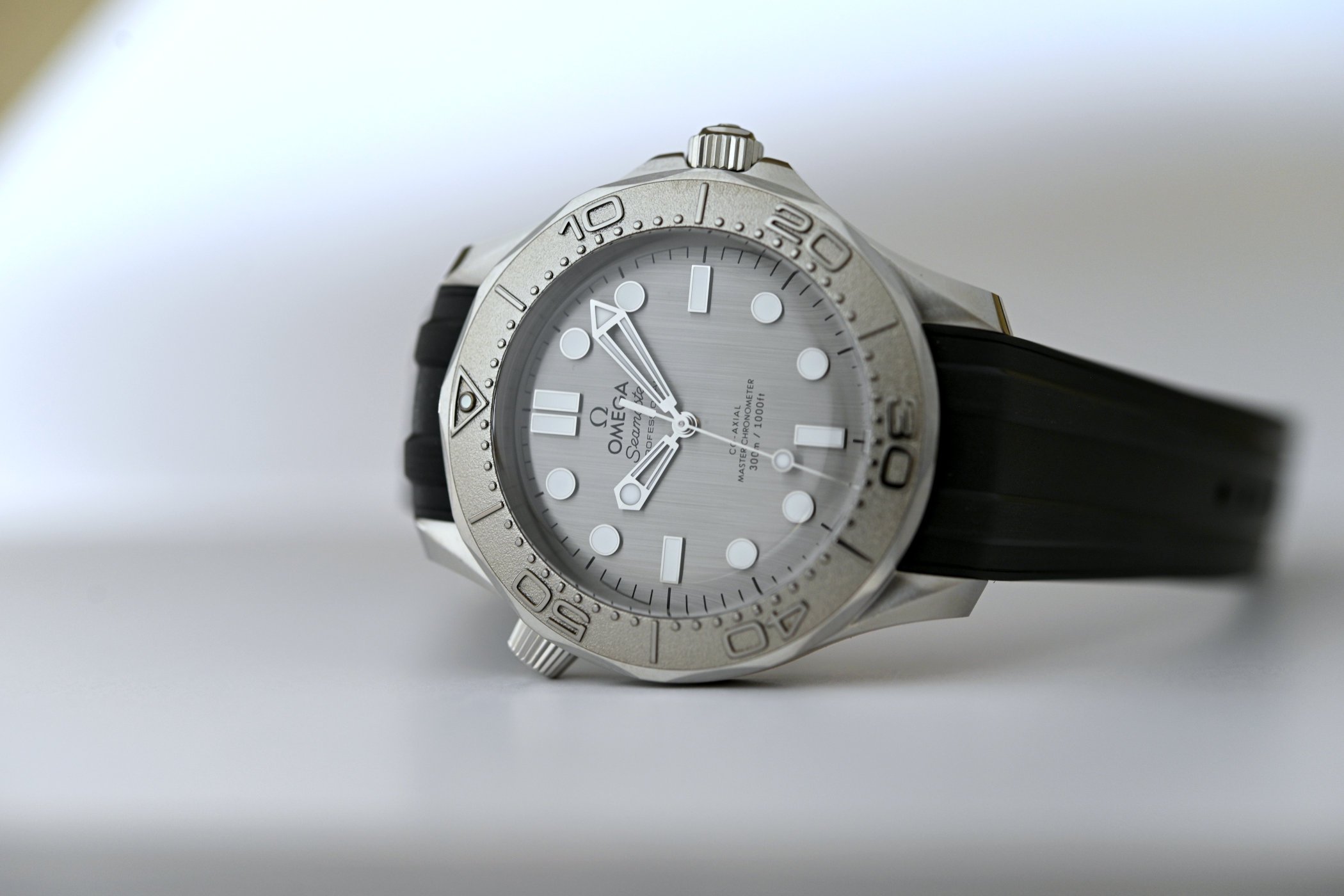
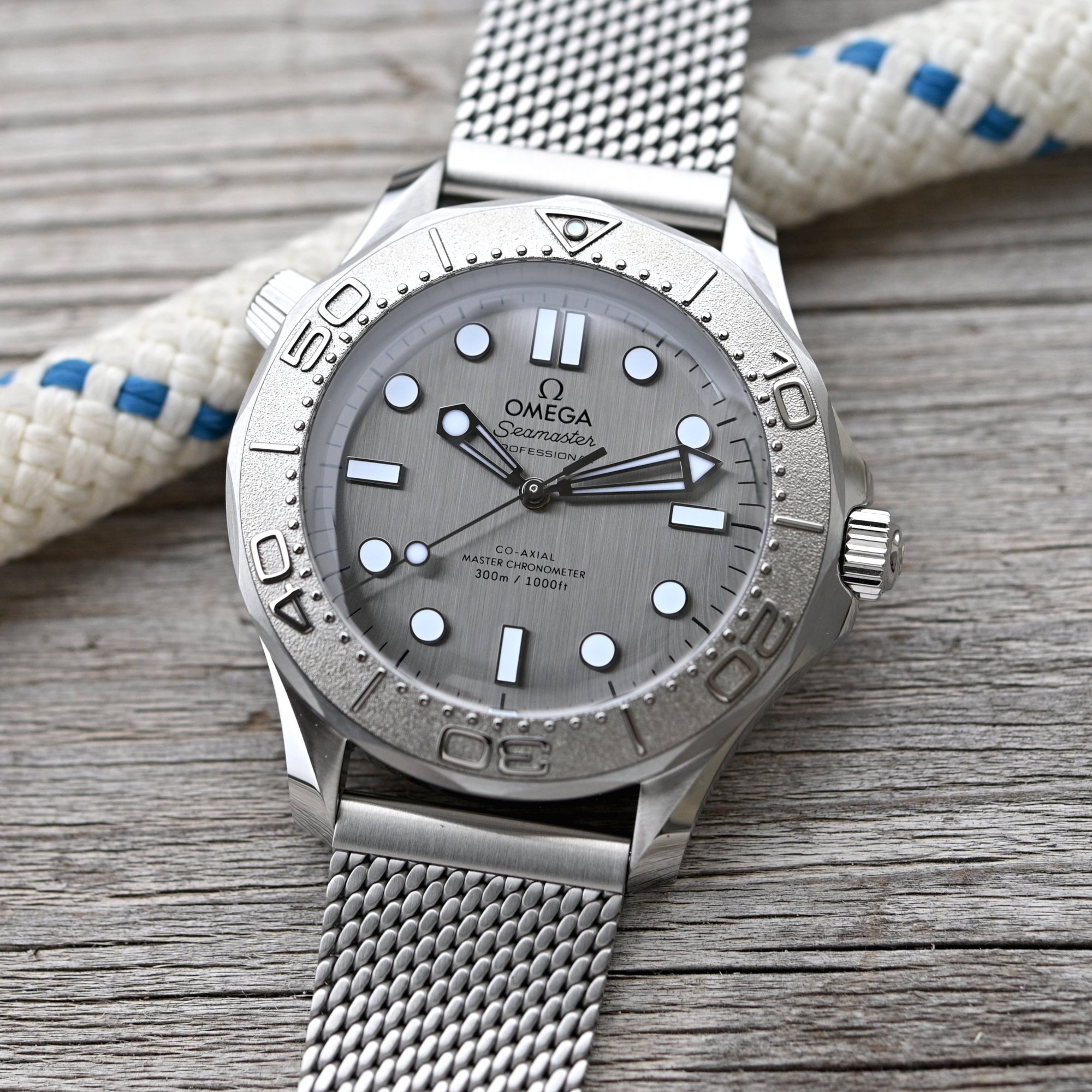
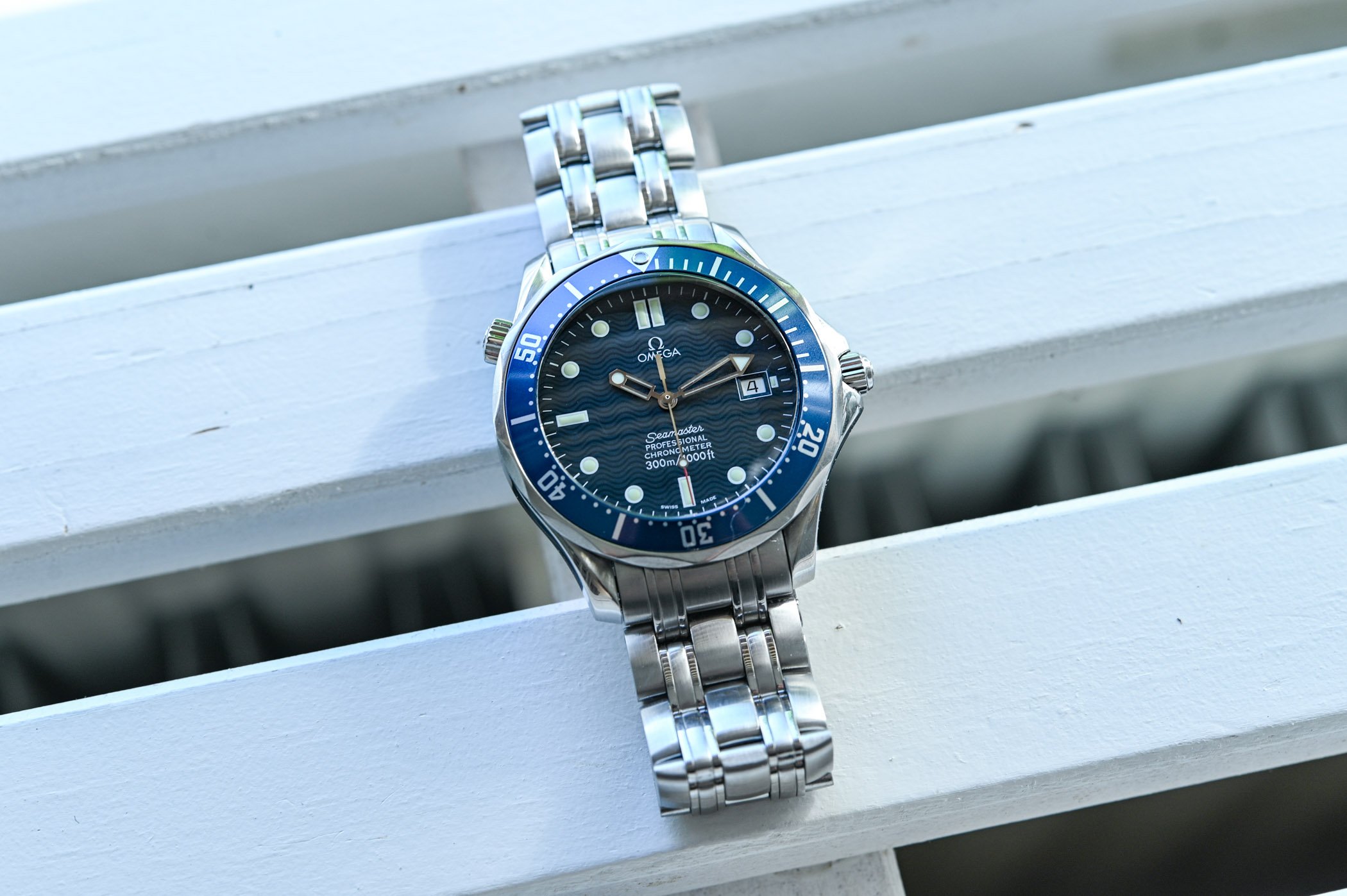

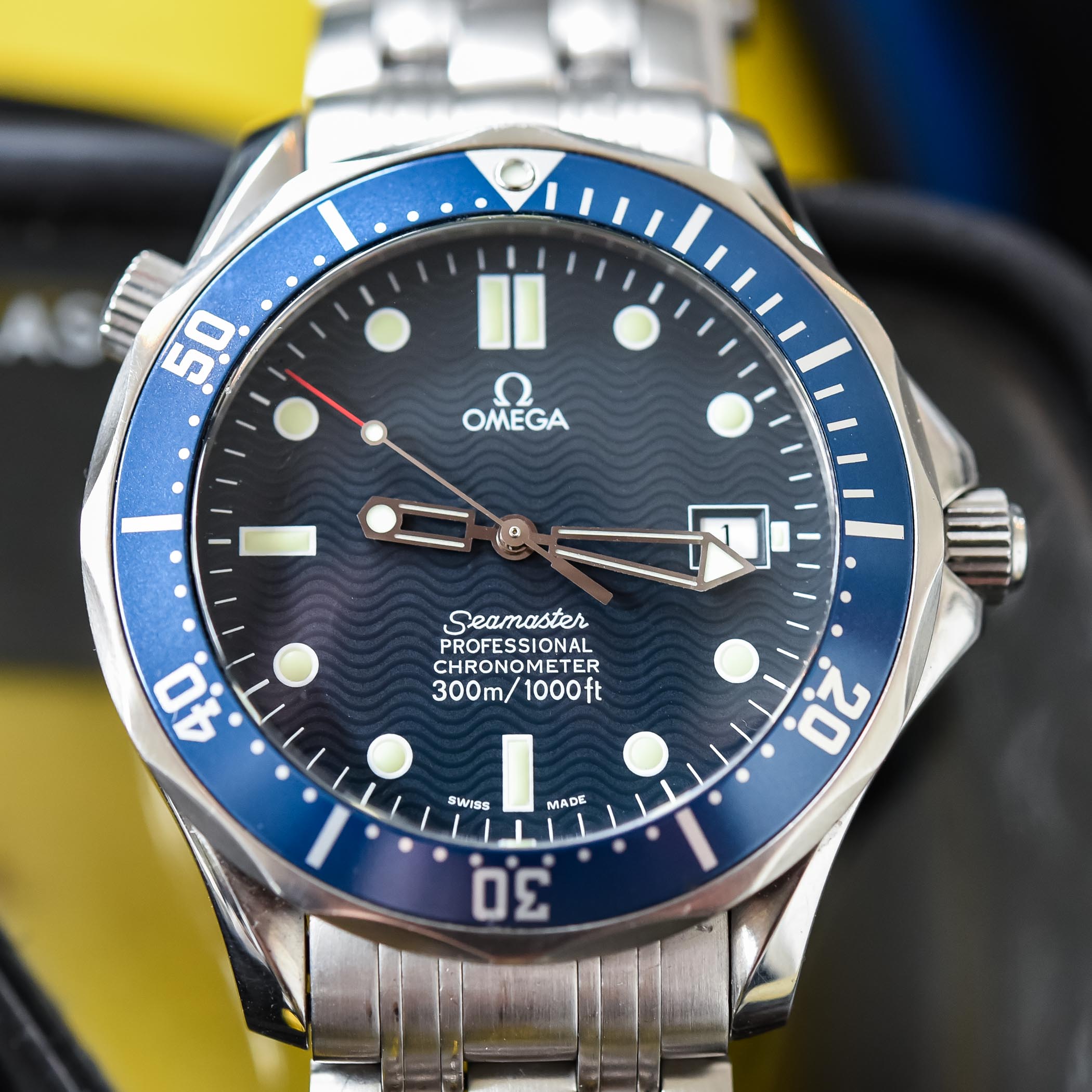


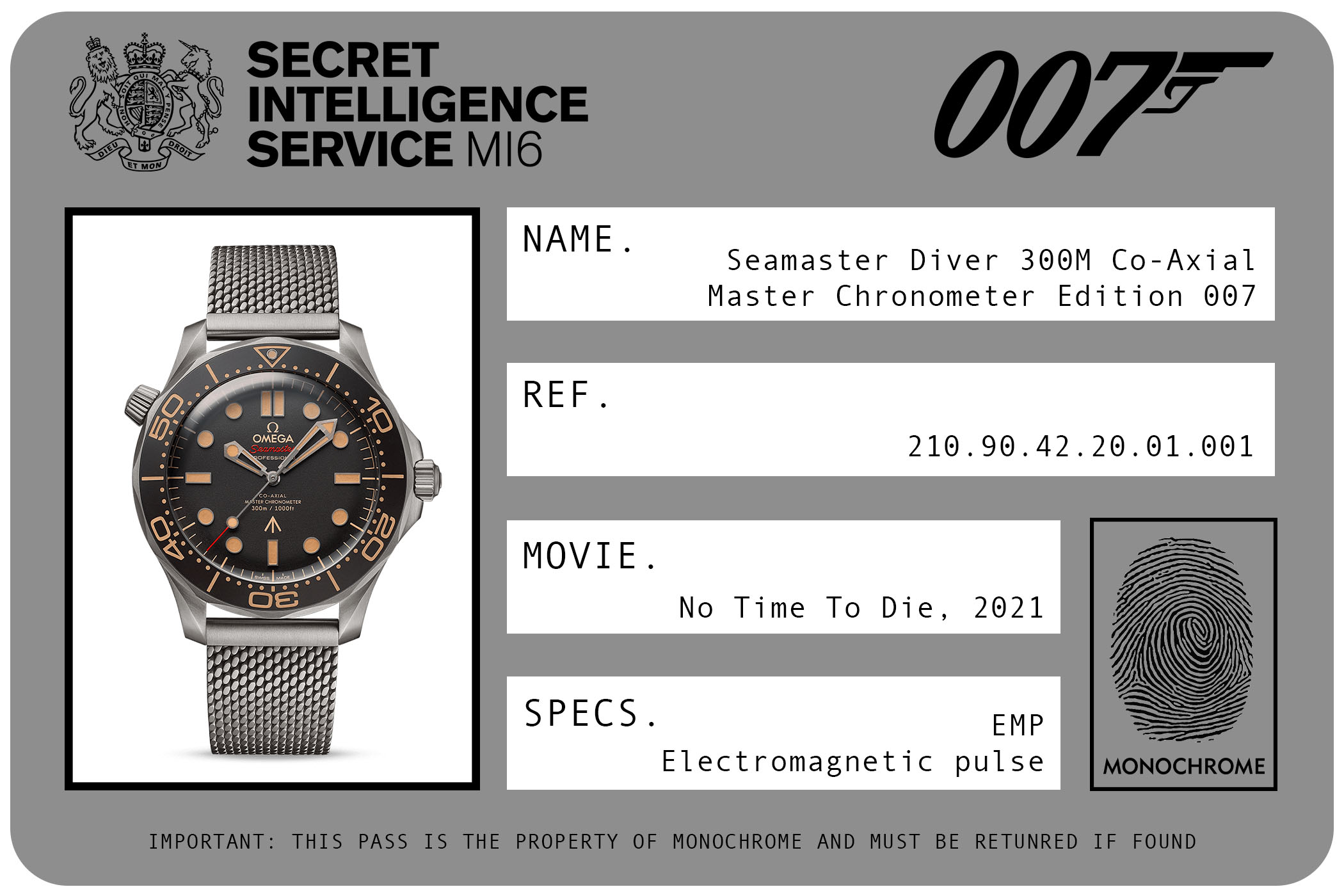
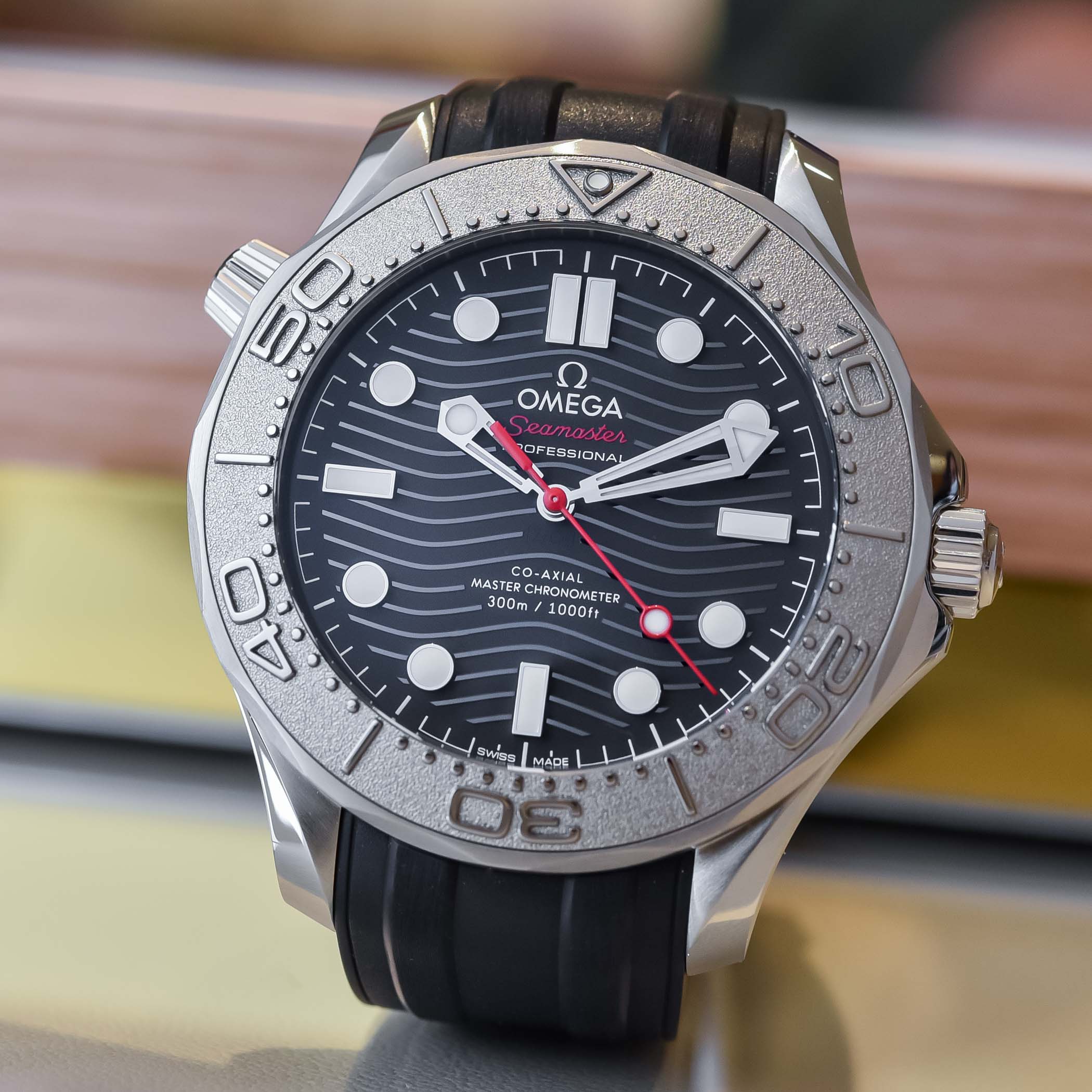
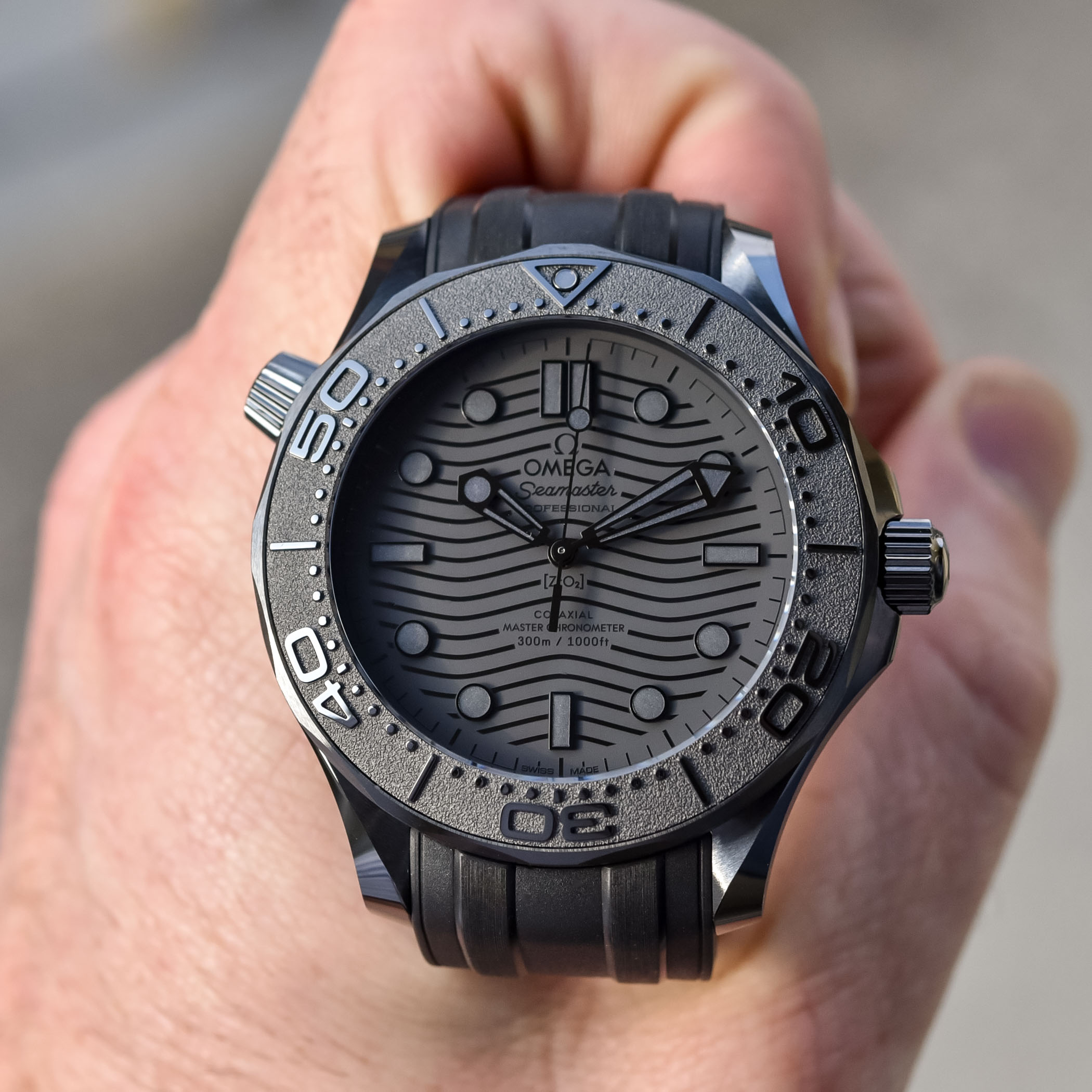
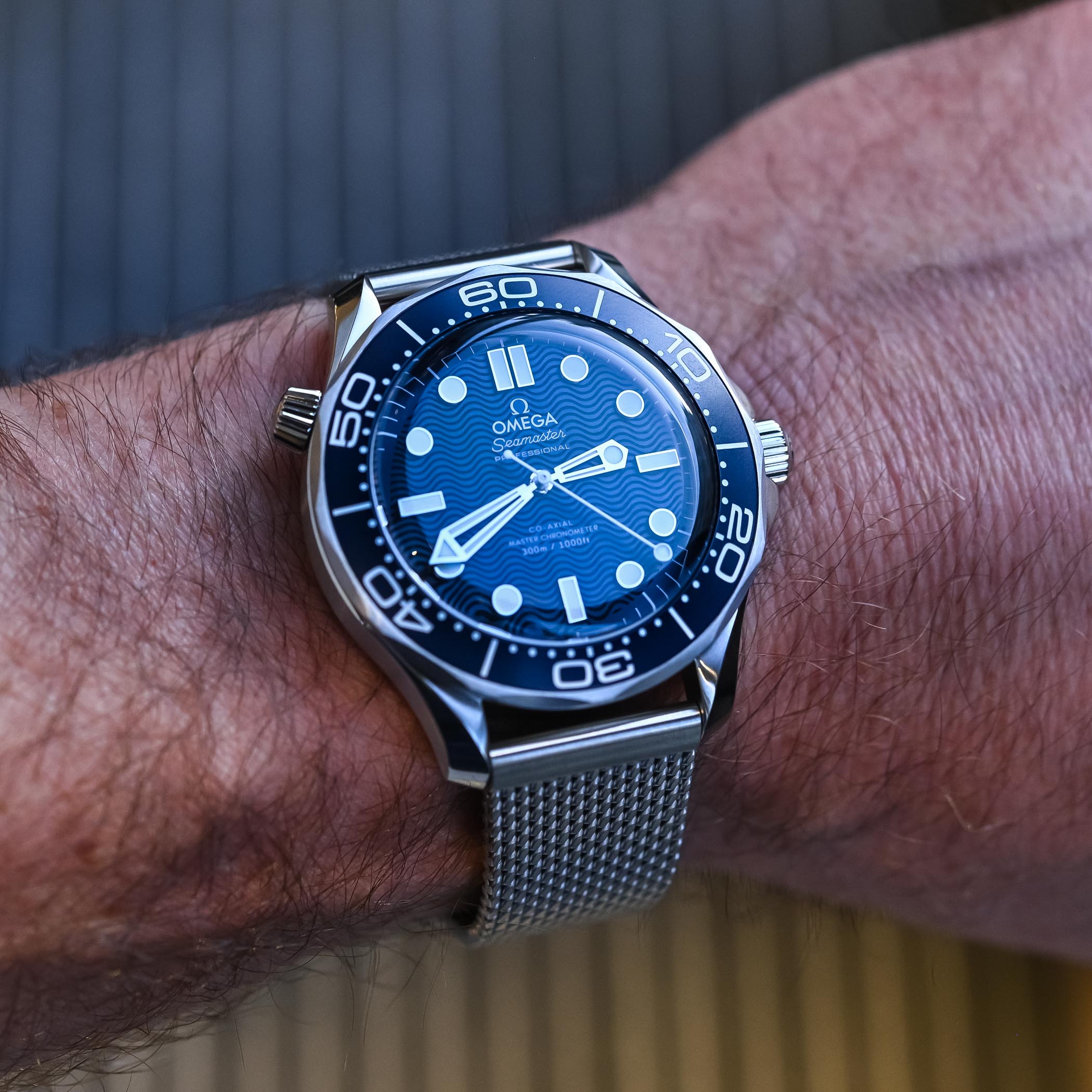
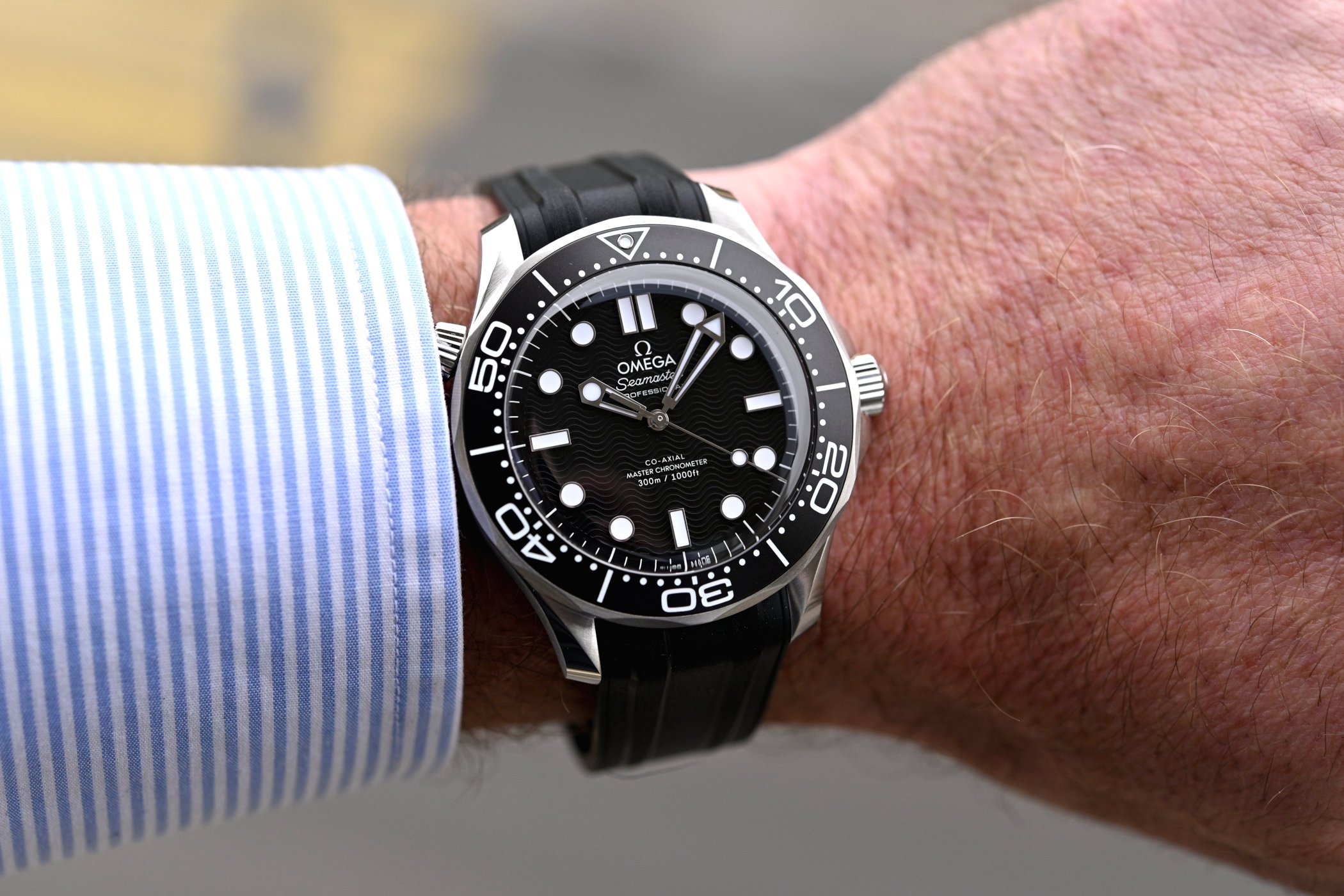
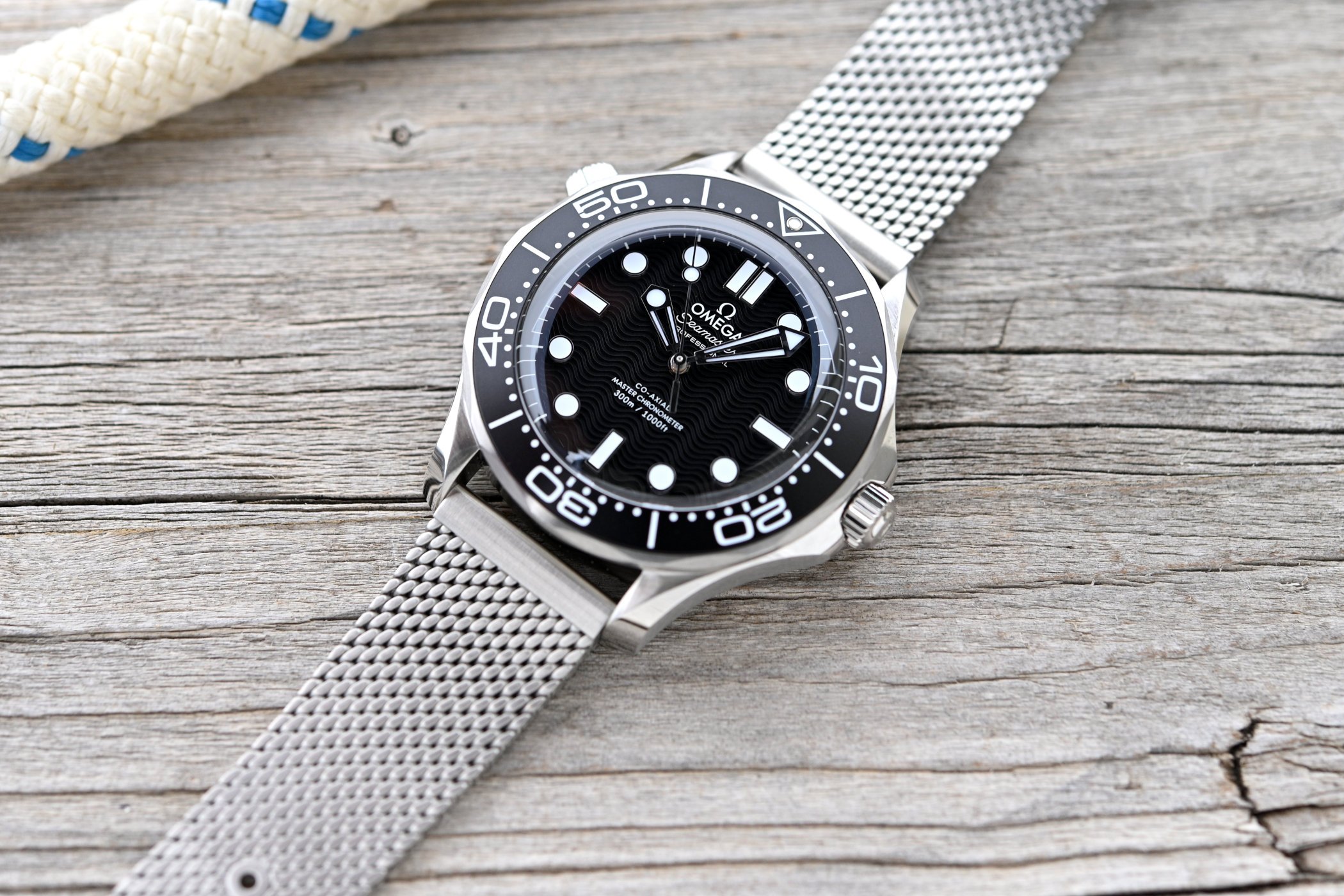
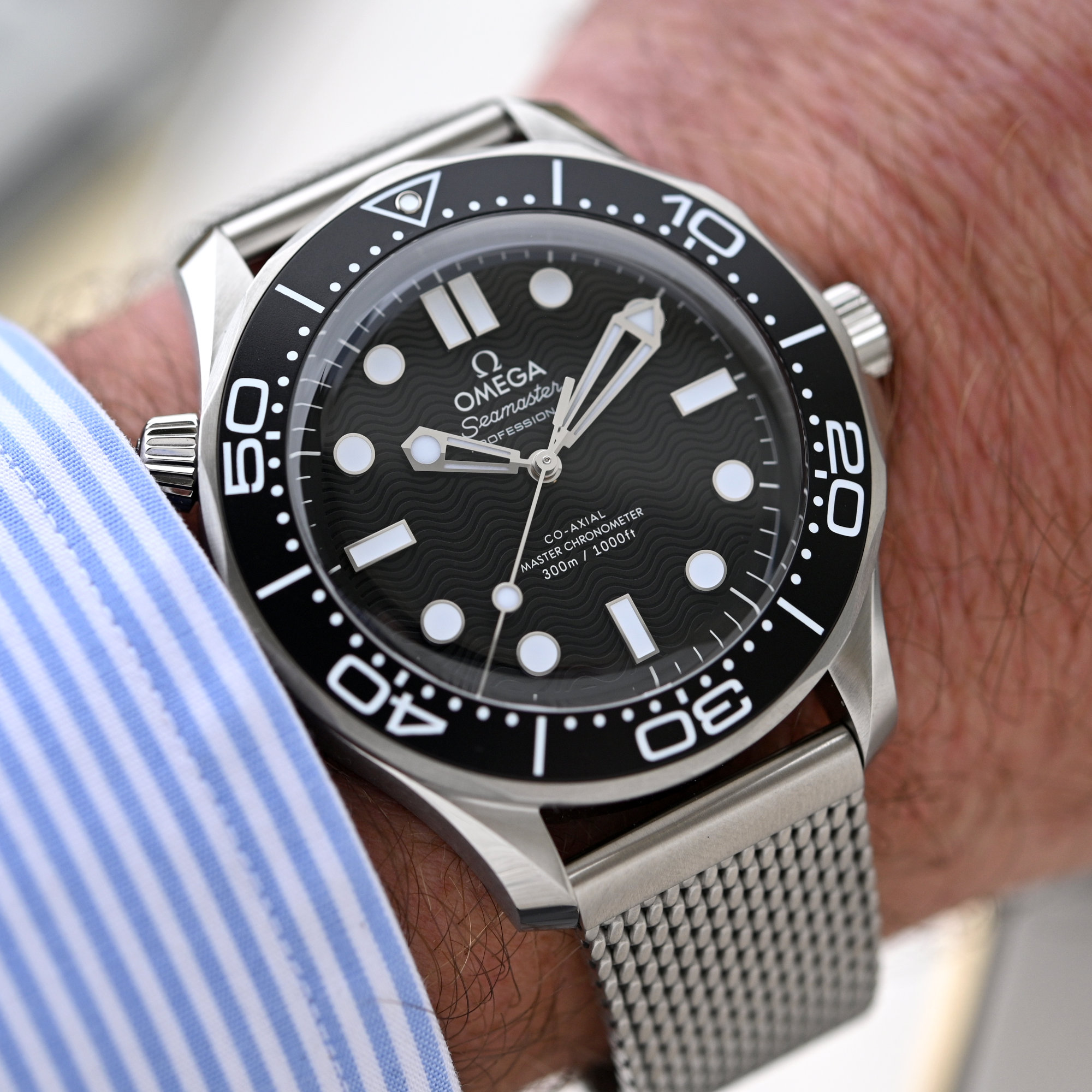
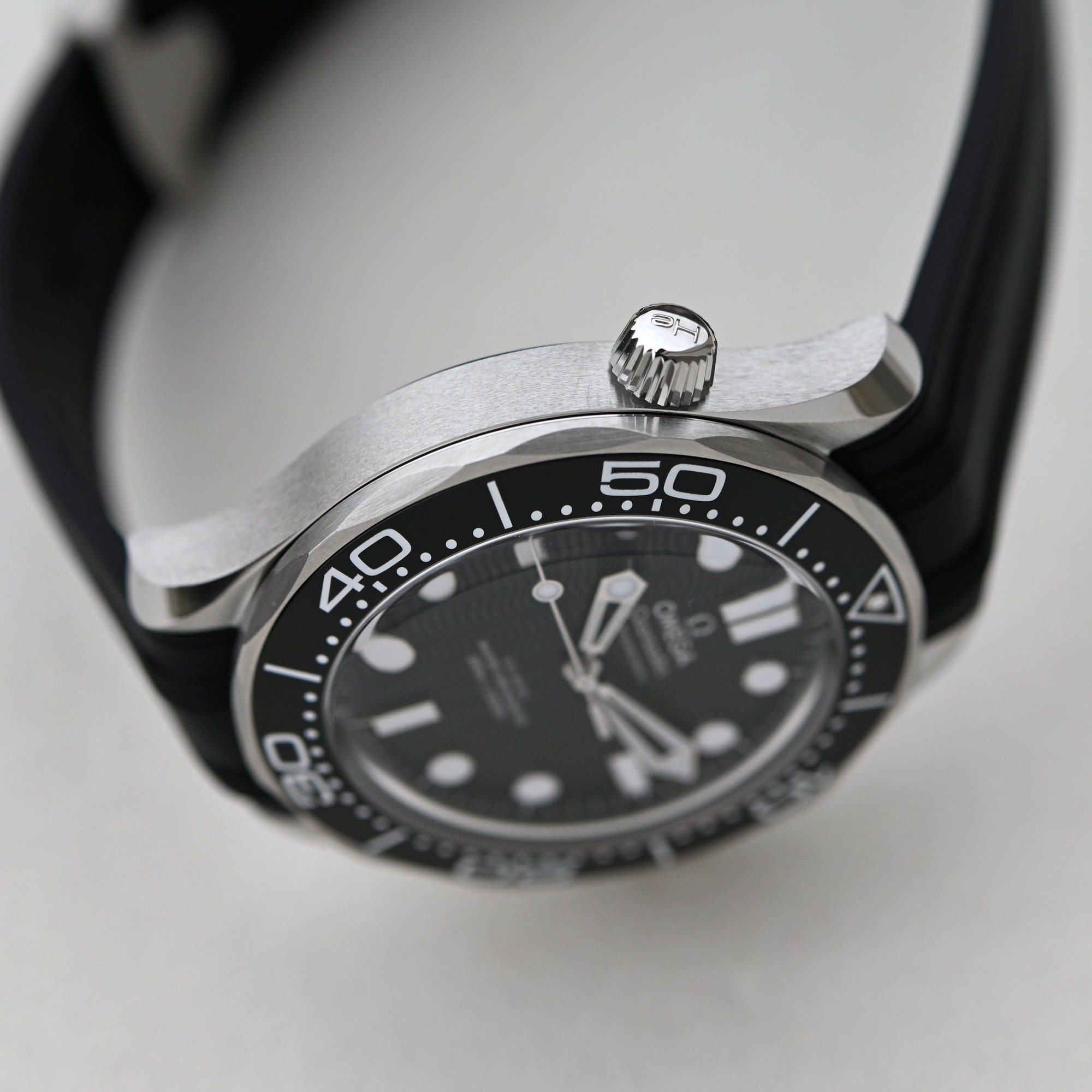
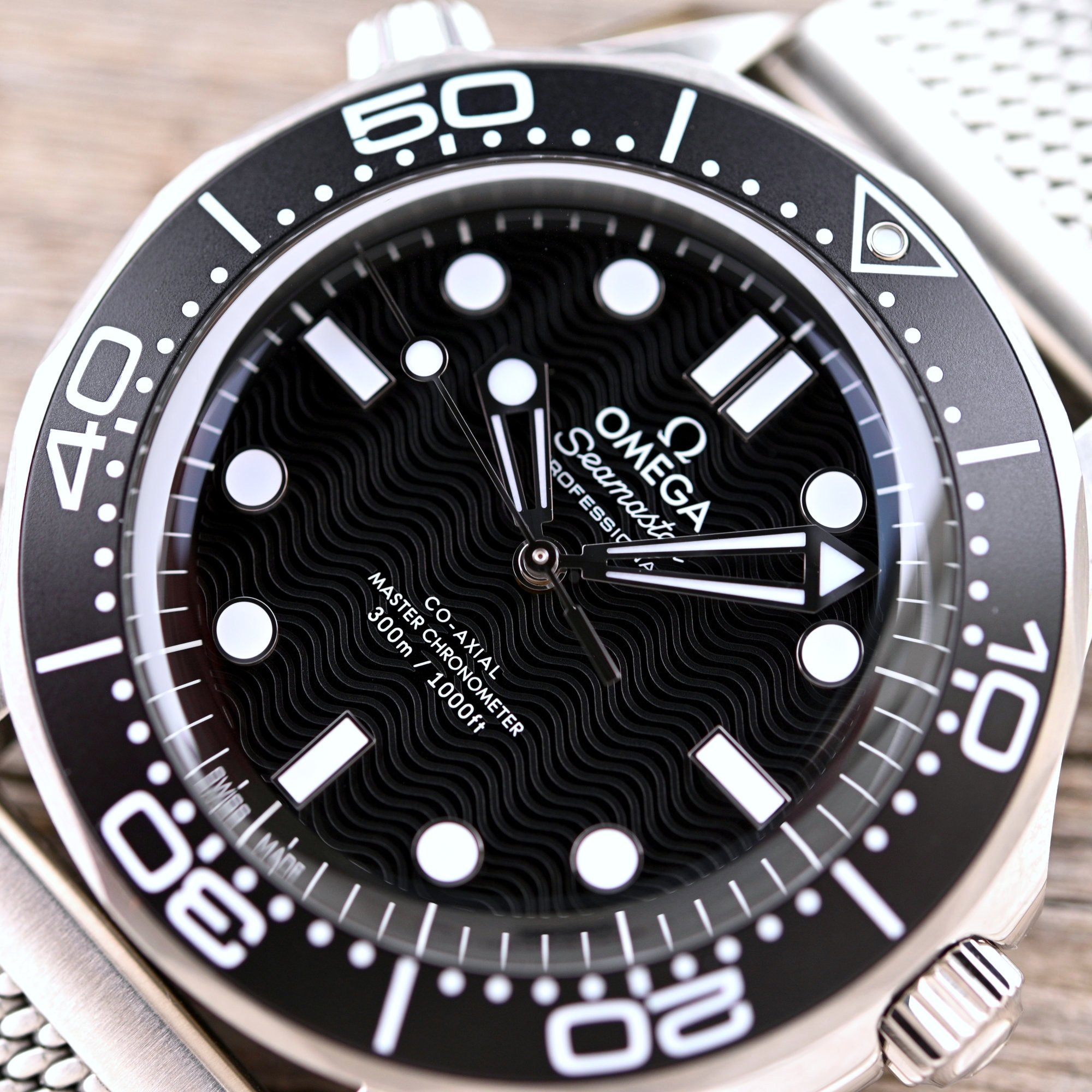
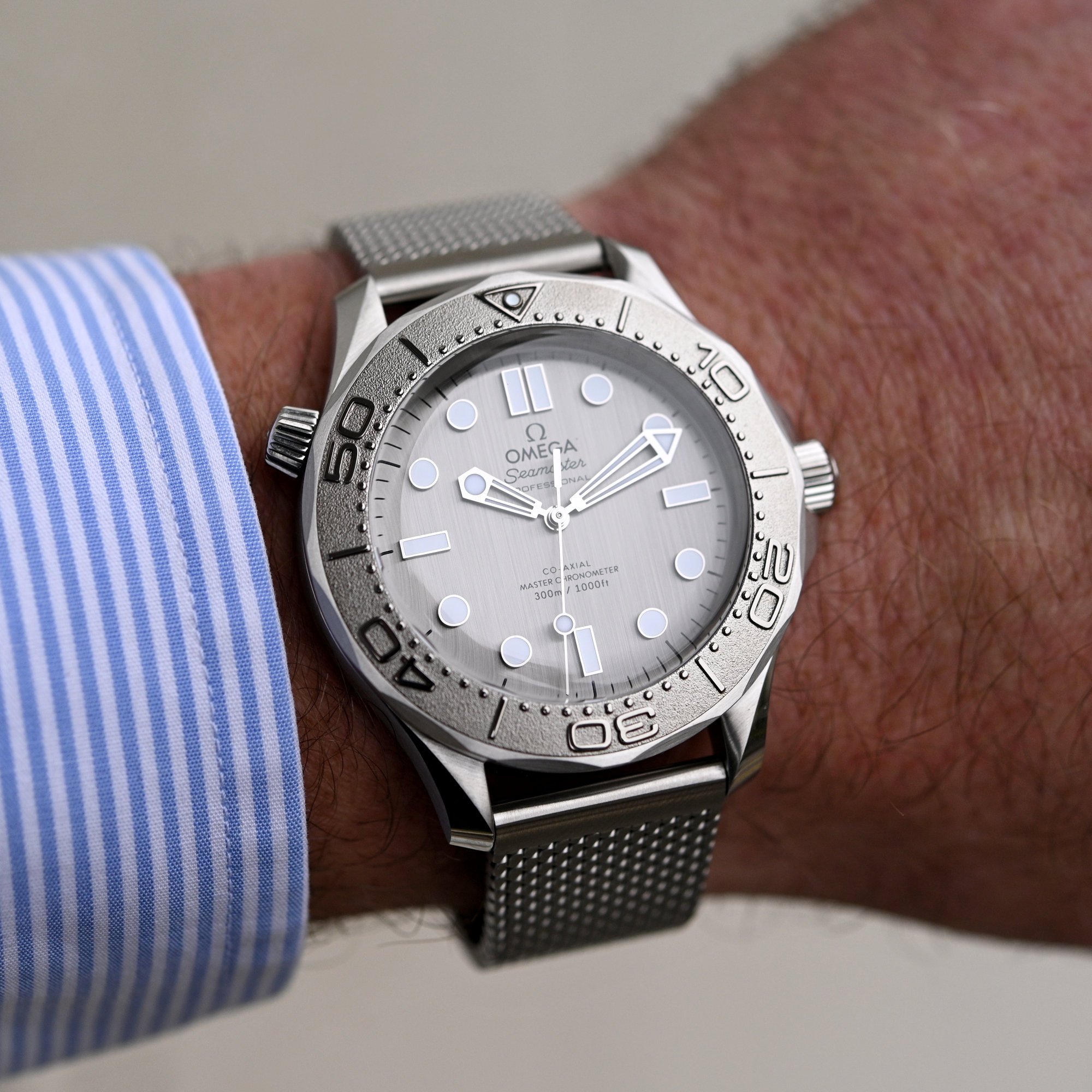
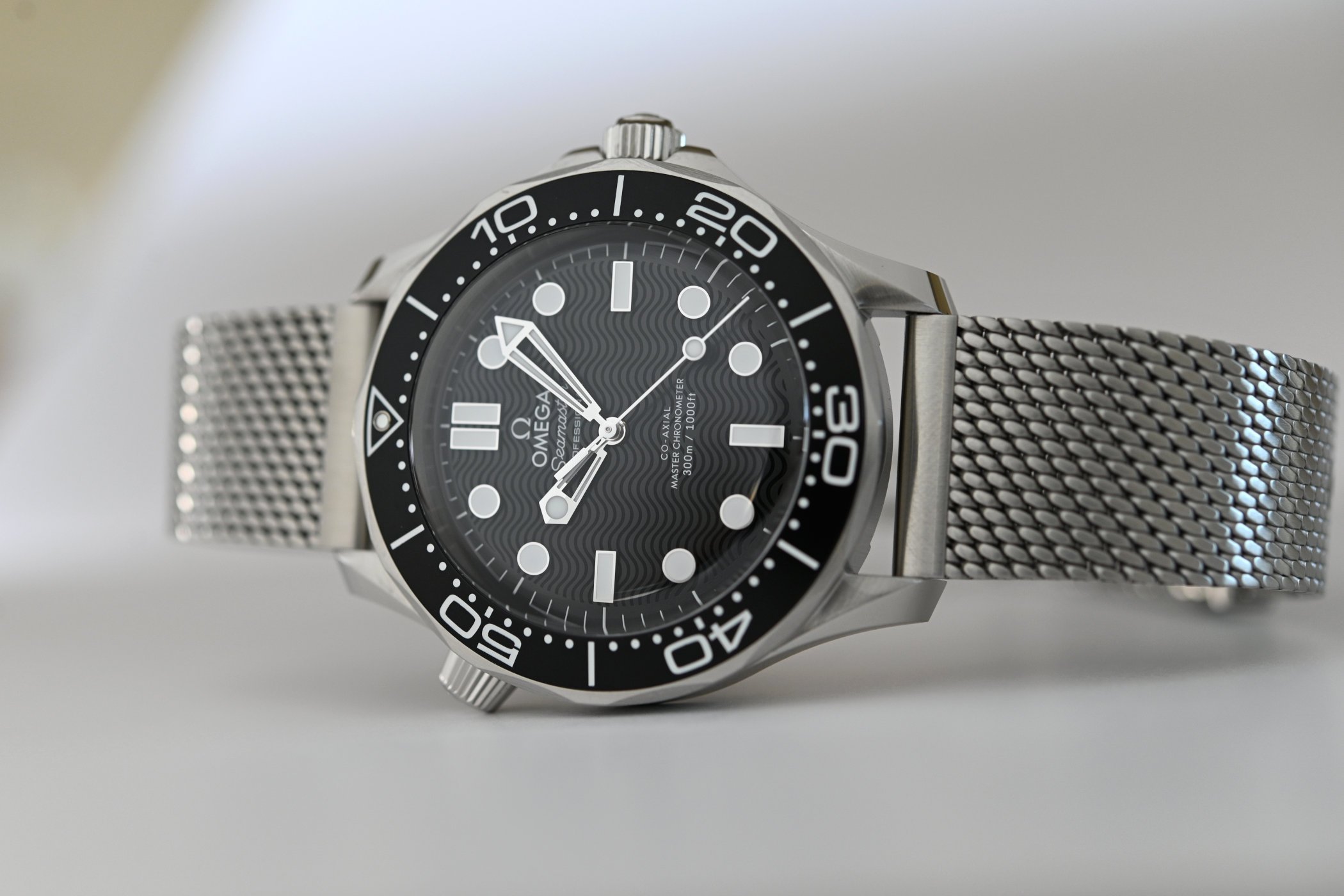
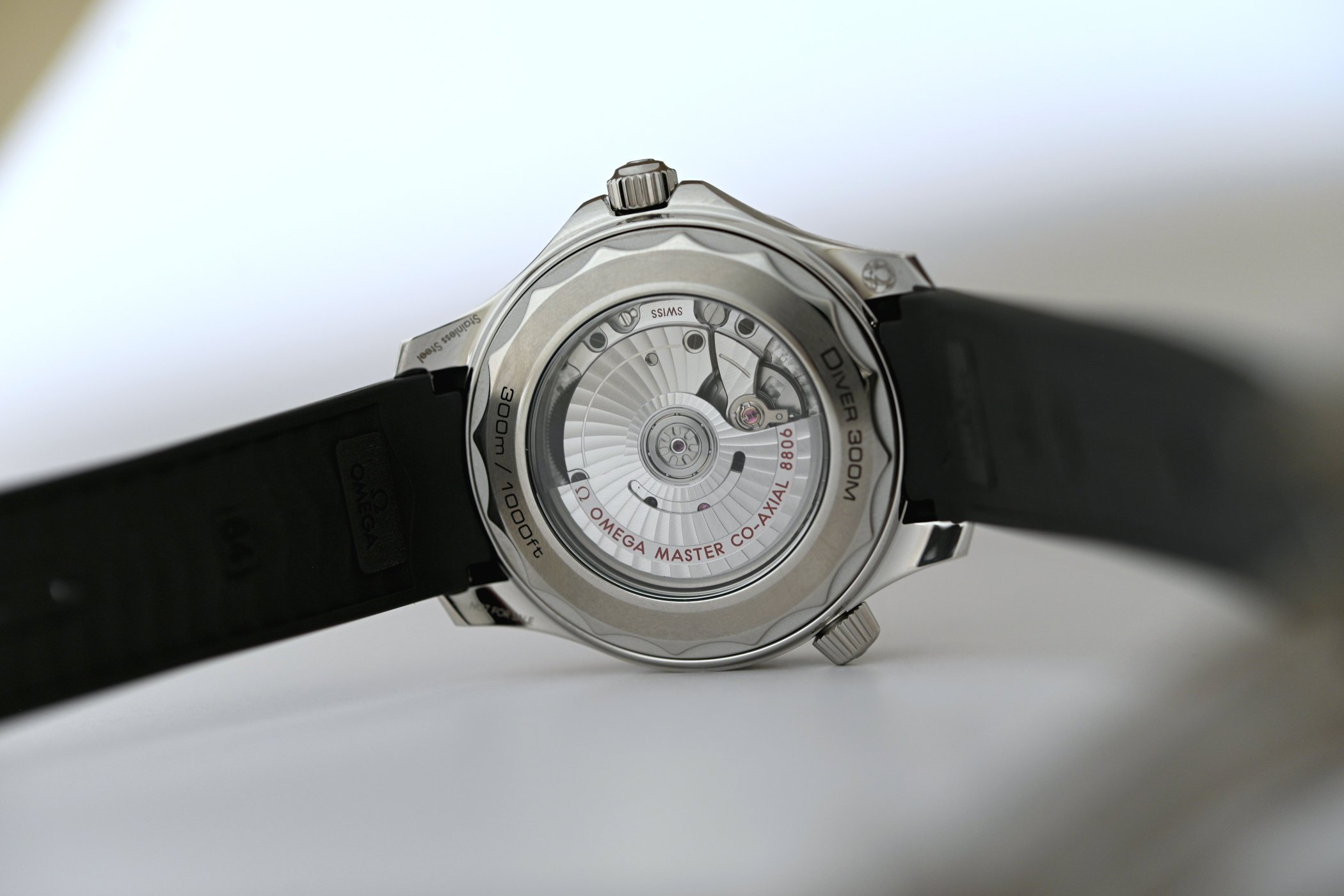
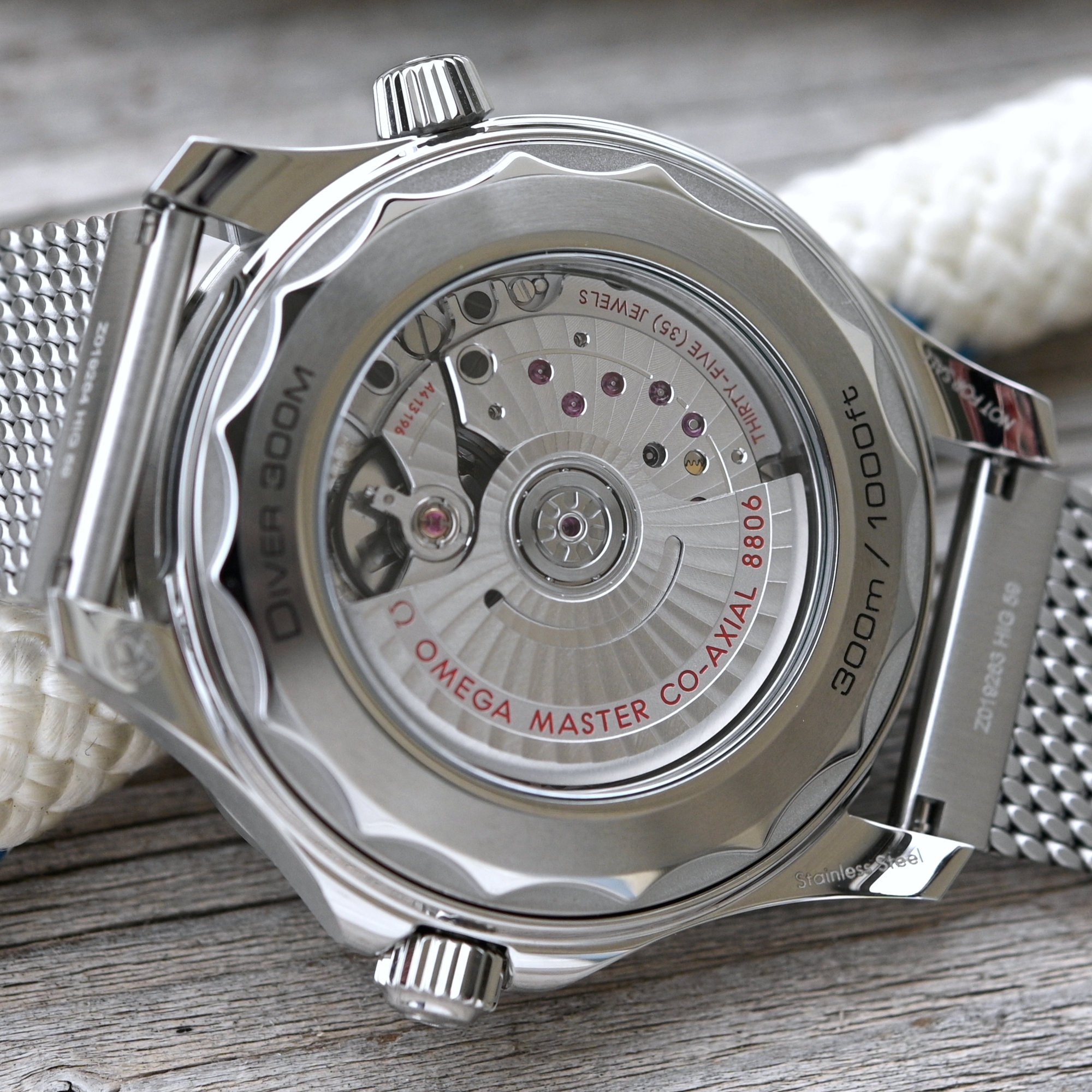
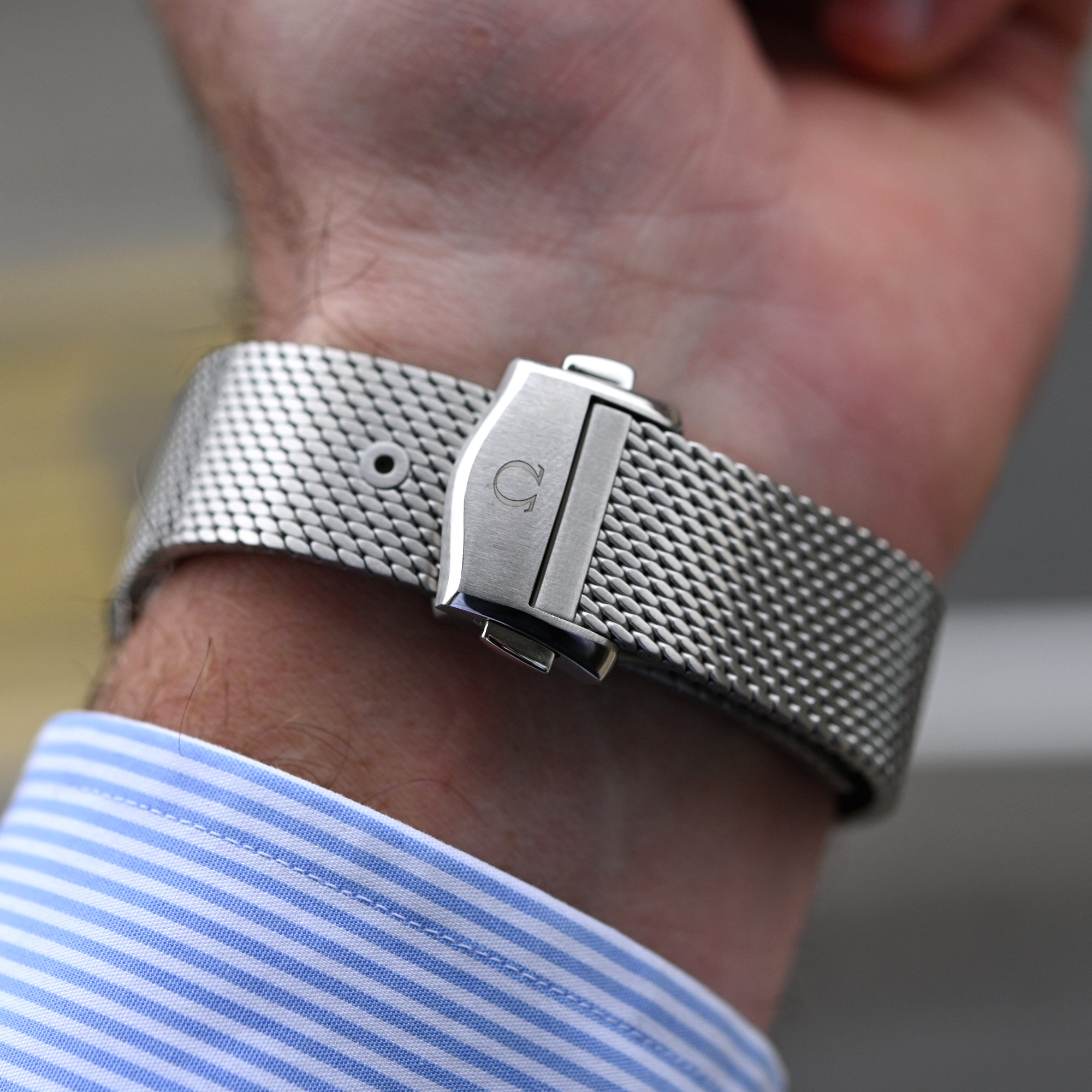
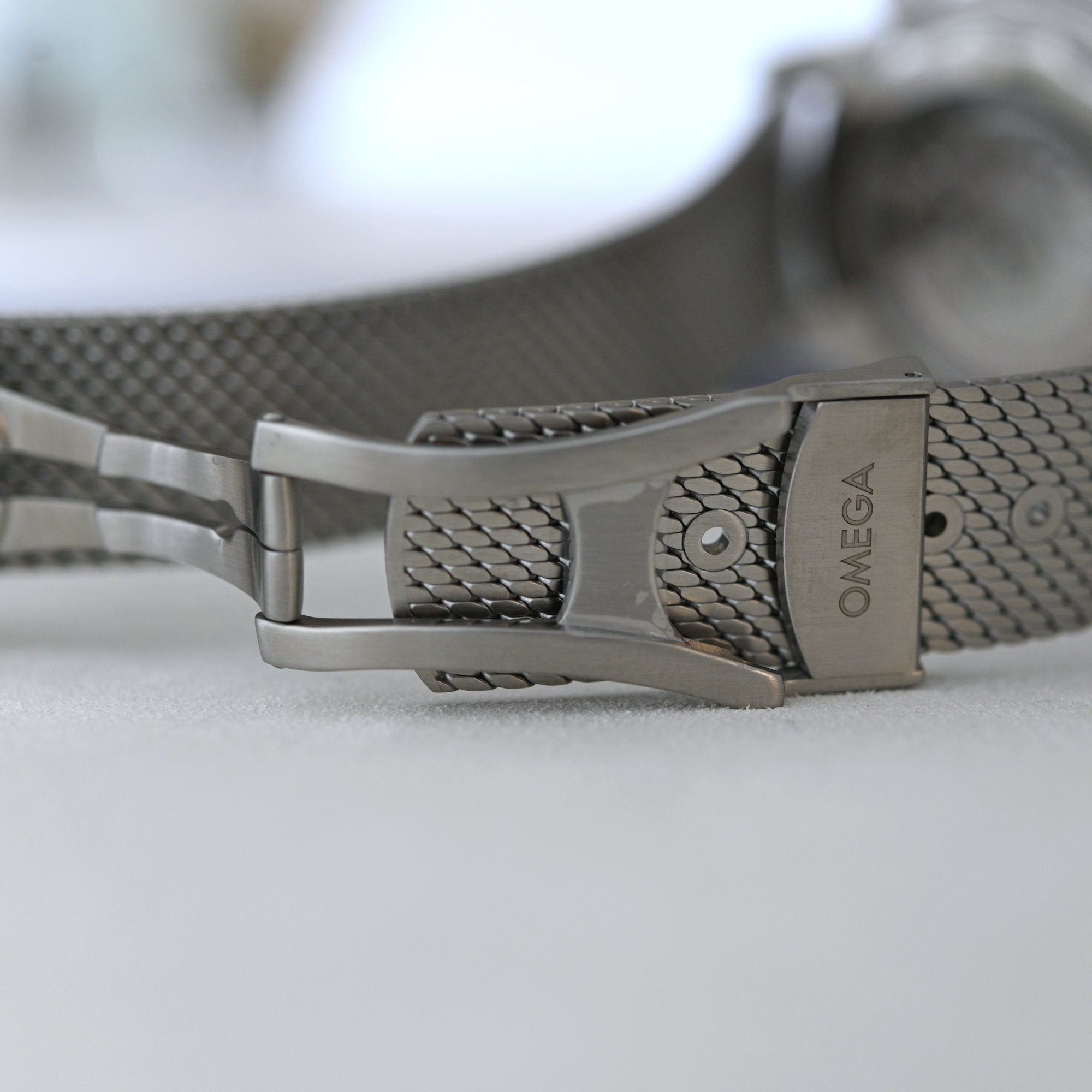

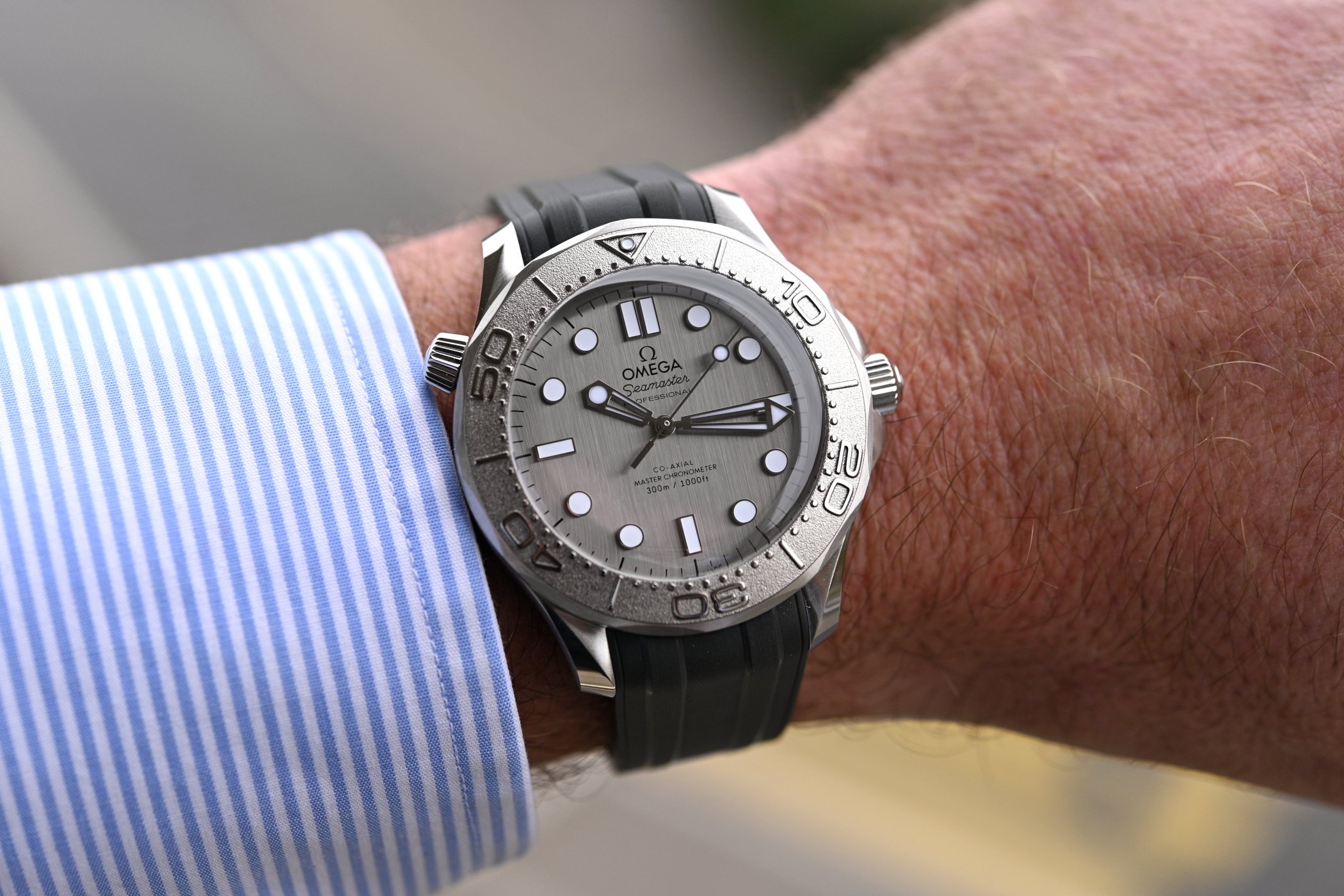
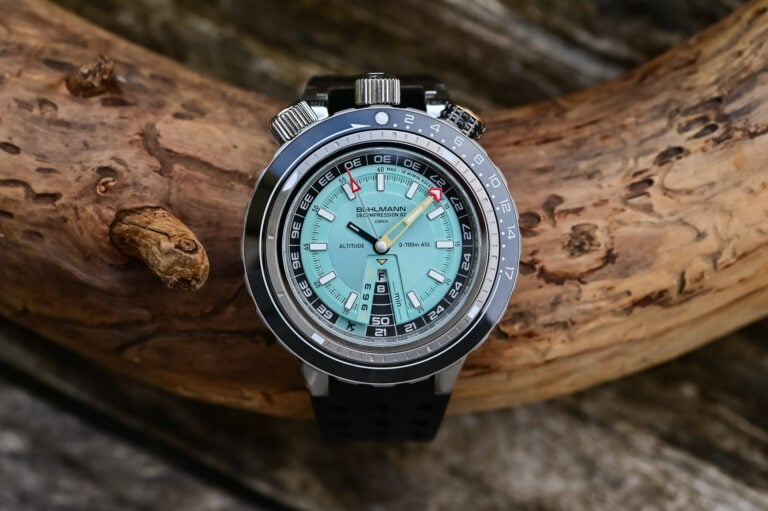
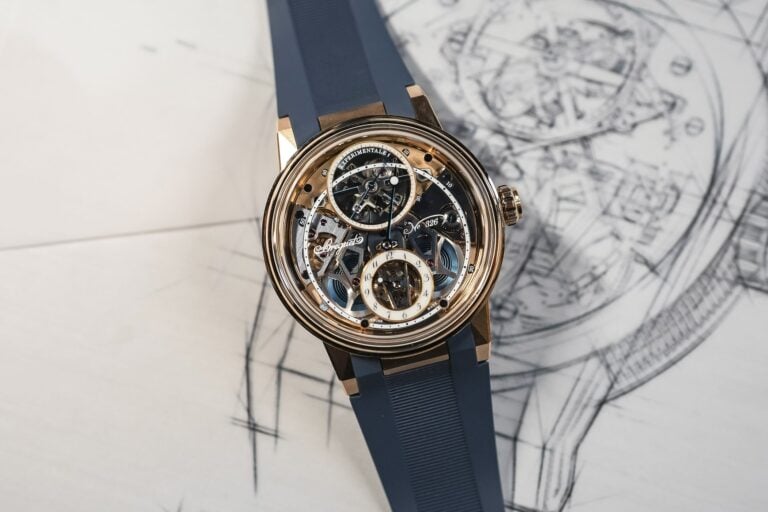
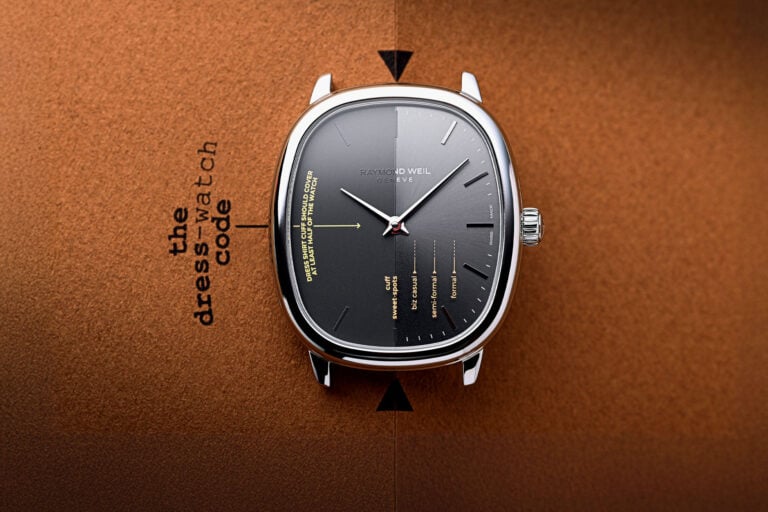
11 responses
The black dial…going head to head with the Sub.
I don’t get why Omega will not put an 89XX movement in the Diver 300M. I guess they want to compete with Tudor and not Rolex but not at this price with the inferior 8806.
It is nice for sure but does not really move the game forward. It would have been nice to see different materials like treated steel offering higher scratch resistance, for example.
I am very happy with my Nekton edition, and last year I bought the stainless steel mesh bracelet for it. Very comfortable and classy looking combo! Now Omega confirmed that my decision was spot on ?
I really like these two new releases as well. Well done!
A great hand on write up as usual from Robin. Contrary to ill-informed opinions about which brand Omega are competing with or quality of the Cal.8806 and why the Cal.8900 is not used in the Diver 300M the reasoning is perfectly clear if you understand Omega, and Swatch’s strategy. First, Omega as a brand are placed, by Swatch as the Rolex competitor in the portfolio, at least for part of the range, because there are actually very few Omega watches with direct Rolex analogs. Blancpain also competes with Rolex at a higher price levels. So the Diver 300M is a direct competitor to the Submariner. This is a rarity in Omega’s range. Second, the Planet Ocean is regarded by Omega as their “premier” diving watch so as it uses the Cal.8900 the Diver was never going to use that movement, both to allow Omega to keep the prices ranges of the two lines distinct but also to encourage customers to “upgrade” to the Planet Ocean. Third, Swatch sees Hamilton, Certina and Longines as its Tudor competitors depending on the price range and models. Finally the Cal.8806 is every bit as good as a Rolex movement. The power reserve is quoted as “at least” 55 hours by Omega. I have watches with both the Cal.8800 and Cal.8806 which run for between 58 and 62 hours. The Cal.8900 in my Globemaster can easily run for 72 hours. The Cal.8910 in my Tresor can run for 80 hours. So power reserve is not an indicator of “quality”. As for timekeeping the Cal.8806 I have 3 watches that use it and the average daily gain is 0.5 seconds making it very accurate and far better than my last Rolex Submariner using the Cal.3000 which gained around 8 seconds a day. Turningbto the new Diver 300M No Date watches they are very lovely but the domed crystal adds a bit to the height. I would prefer the same crystal as that on the “standard” Diver 300M having bought a mesh bracelet for several of my watches my advice would be for prospective buyers to look at ordering the “Short” version as it fits much better on most wrist sizes and is less bulky under the clasp.
Good write up, however; ‘like to learn about the aesthetics of the case and bracelet which was not mentioned or missed in your review!
Is the case all brushed? brushed with polished edges? Bracelet..is it shiny, brushed or in between?
Thank you for your ill informed responses to my completely well informed comment, First, not all Planet Oceans have the 8900 movements. My circa 2021 39mm PO has the 8800 movement which can easily be confirmed by an even cursory glance at Omega’s website.
Also, you explicitly confirm my point that the 300M 8800 is an inferior movement and with its single barrel and 55 hour PR as opposed to the, as you state, “premier” Omega Diver the PO (in large case size) with its 8900 60 hour PR and twin barrels which most important maintains better amplitude to keep it more accurate as it winds down, and that is indeed a mark of quality and according to you an object of upgrade from the 300M. Well, the Submariner is the object of upgrade from a Tudor so my original point stands.
I could go on, but your comment is so riven with nonsense (comparing the accuracy of the 30 year old discontinued Rolex movement to a current Omega movement, why not compare to the 3230 movement?) and direct contradictions to the point you were trying in response to my comment hat I can only assume it is parody or perhaps more accurately, driven by Roman emotion rather than Swiss logic.
the dealbreaker here is the extra crown on the left side (air escape valve)
The 8900 movments are almost a mm thicker than 8800. It’s as simple as that; it’s not a superiority thing. I own multiple watches with both and there is zero perceivable difference that actually matters. Buy the watch with the design you prefer.
Stand out collection. The ghost has made the 300m range the most desirable again
Penso che sarà il prossimo acquisto… complimenti a Omega ???